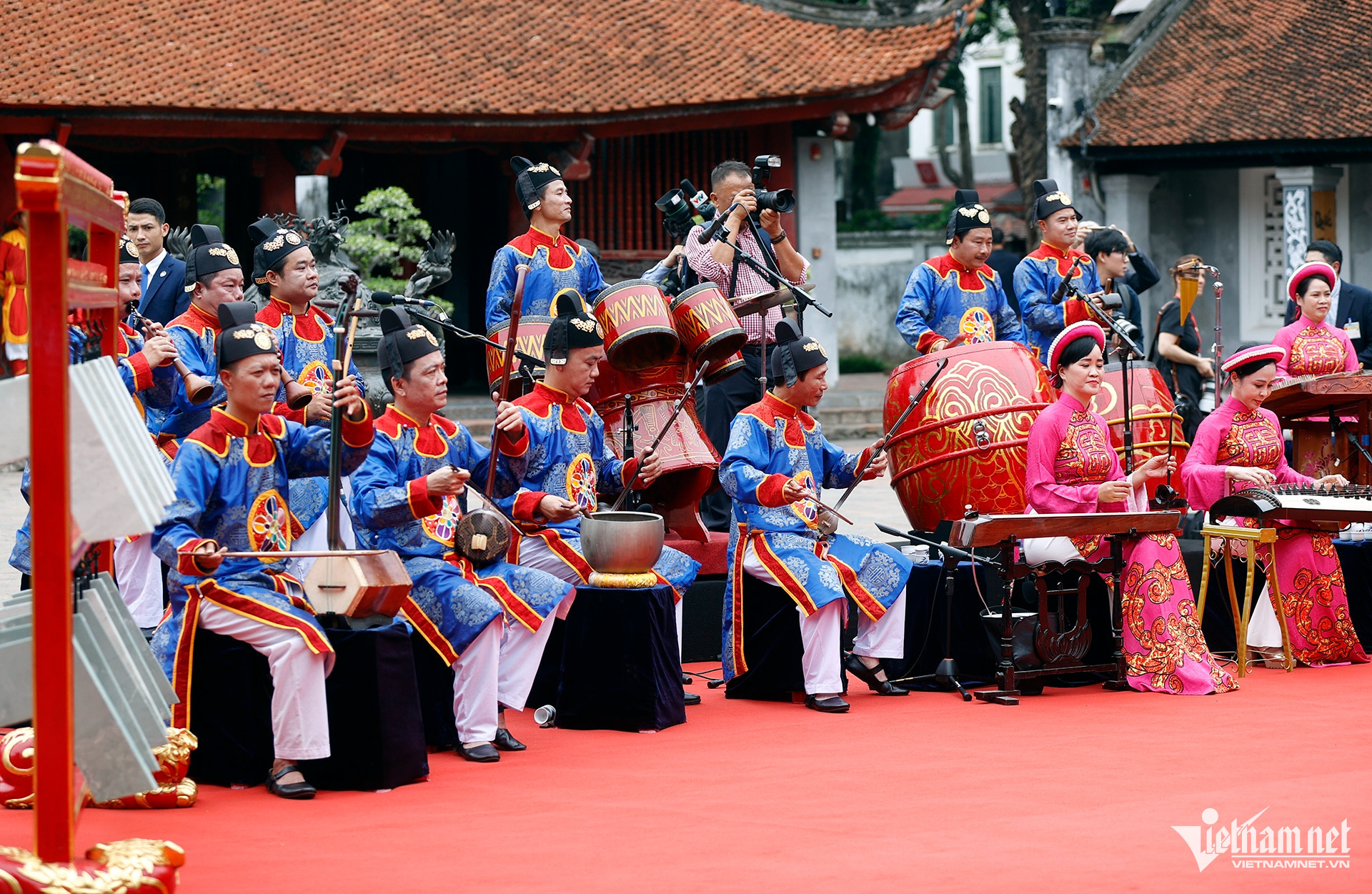At a recent symposium reflecting on the development of Vietnamese literature and the arts over the past 50 years since national reunification, artists and researchers emphasized the growing significance of traditional art in political and diplomatic events.

With many traditional forms like tuong, cheo, and ca tru losing ground due to a lack of successors, dwindling public interest, and competition from modern entertainment, efforts to revitalize and reinvent these heritages are proving crucial for preservation.
In the context of deeper global integration, Vietnam's expanding diplomatic ties have created more opportunities for traditional arts to play an active role in official receptions and foreign affairs. This approach has proven effective in raising awareness and appreciation for national cultural arts in contemporary society.
A recent example was a Nha nhac royal music performance for French President Emmanuel Macron during his state visit to Vietnam in May. The event underscored how classical Vietnamese music can serve as a cultural ambassador at high-level diplomatic functions.
Similarly, at the ongoing World Expo 2025 in Osaka, Japan, the Vietnam Pavilion has been showcasing the nation's rich cultural heritage through vibrant performances, including water puppetry, lotus dances, and traditional instruments like dan tranh, dan bau, T’rung, K’long put, and sao truc.
These performances exemplify Vietnam’s dual commitment to heritage conservation and cultural promotion in modern life, reinforcing the role of traditional arts in the sustainable development of Vietnamese literature and the arts.
Staging traditional arts during state ceremonies, international conferences, cultural weeks, or exhibitions offers profound value. Diplomatically, they serve as powerful tools for promoting Vietnam’s image and affirming the depth of its cultural identity.
Integrating folk art into political-diplomatic events motivates artists to keep their crafts alive. Every performance in a prestigious setting is an opportunity to honor and highlight national heritage and foster public awareness of cultural preservation.
This strategy complements other preservation efforts, such as cultural clubs, reenactment models, theatrical adaptations, and training programs. However, for this approach to be effective long-term, it requires strategic planning and comprehensive investment.
Traditional arts must be recognized as essential elements in the nation's cultural diplomacy. The government should design well-structured policies and coordinate closely among ministries, agencies, and local authorities.
The Ministry of Culture, Sports and Tourism and the Ministry of Foreign Affairs, in particular, must work together to select performances tailored to each event, audience, and partner country.
Art institutions should produce high-quality sample programs that retain core cultural values while being adapted for international audiences. Performances should feature bilingual narration in English or local languages to enhance understanding of Vietnamese culture.
Artists performing abroad must be specially trained, possess basic foreign language skills, have solid professional expertise, and master stage presence suitable for international settings.
PV